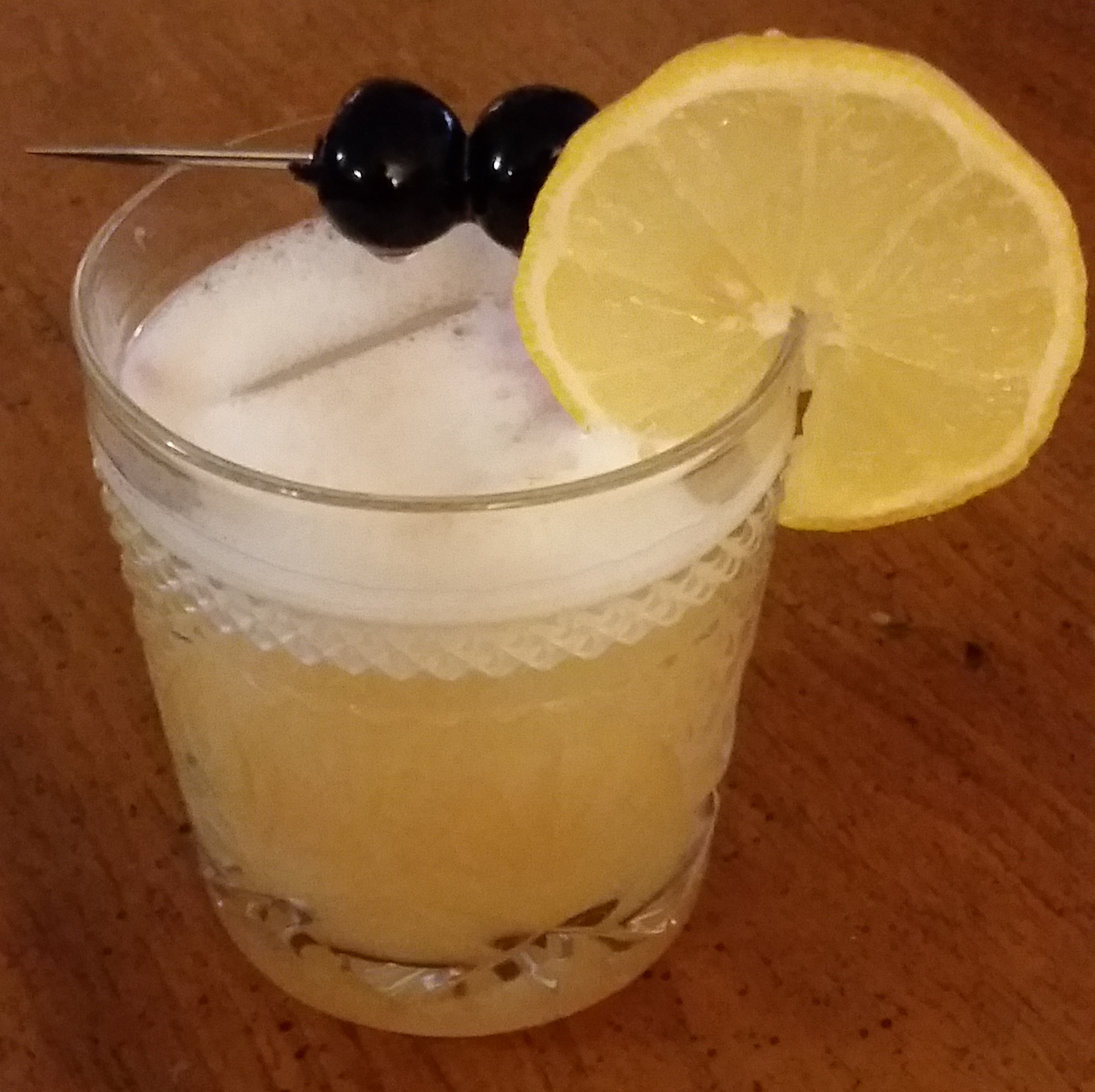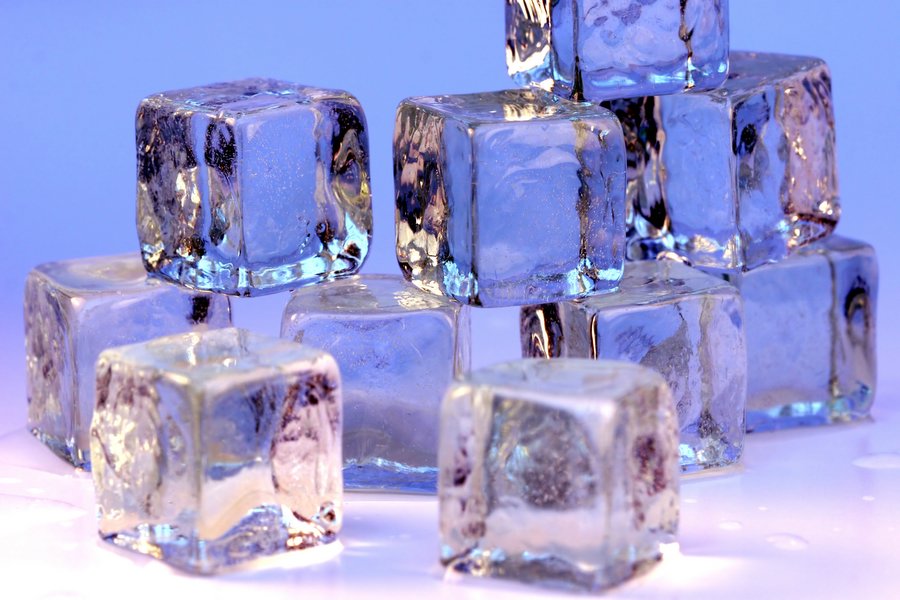|
Green Swizzle
A Green Swizzle is an alcohol-containing cocktail of the sour family. It was popular in Trinidad at the beginning of the 20th century but got lost during the course of the Second World War. Today's recipes usually constitute an often distinct divergence from the original. History The earliest written evidence for the existence of the Green Swizzle can be found in the ''Handbook of Trinidad Cookery'' written by E.M. Lickfold in 1907. That book lists a "Green Cocktail" consisting of falernum and wormwood bitters that were swizzled and completed with Angostura bitters. In the same book rum, lime juice and sugar are named as ingredients for falernum. In 1912, travel writer (and later entrepreneur and politician) Lindon Bates described a completely different drink as a Green Swizzle, naming gin, lime juice and carbonated water as its ingredients. The Green Swizzle gained popularity in the English-speaking world through the short story ''The Rummy Affair of Old Biffy'' by P. G. Wode ... [...More Info...] [...Related Items...] OR: [Wikipedia] [Google] [Baidu] |
Sour (cocktail)
A sour is a traditional family of mixed drinks. ''Sours'' belong to one of the old families of original cocktails and are described by Jerry Thomas in his 1862 book ''How to Mix Drinks''.Paul ClarkeMake Yourself Comfortable September 25, 2005. The Cocktail Chronicles. Retrieved on January 1, 2007. Sours are mixed drinks containing a base liquor, lemon or lime juice, and a sweetener (simple syrup or orgeat syrup). Egg whites are also included in some sours. Types of sours Gin sour The gin sour is a traditional mixed cocktail that predates Prohibition in the United States. It is a simple combination of gin, lemon juice, and sugar. Adding carbonated water to this turns it into a gin fizz. It was popular during the 1940s, and Kevin Starr includes it in "an array of drinks (the gin sour, the whiskey sour, the gin Rickey, the Tom Collins, the pink lady, the old fashioned) that now seem period pieces, evocative of another era". Pisco sour The classic pisco sour recipe contain ... [...More Info...] [...Related Items...] OR: [Wikipedia] [Google] [Baidu] |
Crème De Menthe
Crème de menthe (, French for "mint cream") is a sweet, mint-flavored alcoholic beverage. It is available commercially in a colorless version (called "white") and a green version (colored by the mint leaves or by added coloring if made from extract instead of leaves). Both varieties have similar flavor and are interchangeable in recipes, except where color is important. It is usually made with Corsican mint or peppermint, which is steeped in grain alcohol for several weeks before it is filtered and sweetened to create the final product. It typically has 25% alcohol by volume. Crème de menthe is an ingredient in several cocktails, such as the Grasshopper and the Stinger. It is also served as a digestif and used in cooking as a flavoring (see Mint chocolate). It is also a primary component of the popular South African shooter known as the Springbokkie. Music Sergei Rachmaninoff, although otherwise a teetotaler, found that a glass of crème de menthe steadied his nerves when pl ... [...More Info...] [...Related Items...] OR: [Wikipedia] [Google] [Baidu] |
Cold Drinks
Cold is the presence of low temperature, especially in the atmosphere. In common usage, cold is often a subjective perception. A lower bound to temperature is absolute zero, defined as 0.00K on the Kelvin scale, an absolute thermodynamic temperature scale. This corresponds to on the Celsius scale, on the Fahrenheit scale, and on the Rankine scale. Since temperature relates to the thermal energy held by an object or a sample of matter, which is the kinetic energy of the random motion of the particle constituents of matter, an object will have less thermal energy when it is colder and more when it is hotter. If it were possible to cool a system to absolute zero, all motion of the particles in a sample of matter would cease and they would be at complete rest in the classical sense. The object could be described as having zero thermal energy. Microscopically in the description of quantum mechanics, however, matter still has zero-point energy even at absolute zero, because ... [...More Info...] [...Related Items...] OR: [Wikipedia] [Google] [Baidu] |
Citrus Cocktails
''Citrus'' is a genus of flowering trees and shrubs in the rue family, Rutaceae. Plants in the genus produce citrus fruits, including important crops such as oranges, lemons, grapefruits, pomelos, and limes. The genus ''Citrus'' is native to South Asia, East Asia, Southeast Asia, Melanesia, and Australia. Various citrus species have been used and domesticated by indigenous cultures in these areas since ancient times. From there its cultivation spread into Micronesia and Polynesia by the Austronesian expansion (c. 3000–1500 BCE); and to the Middle East and the Mediterranean (c. 1200 BCE) via the incense trade route, and onwards to Europe and the Americas. History Citrus plants are native to subtropical and tropical regions of Asia, Island Southeast Asia, Near Oceania, and northeastern Australia. Domestication of citrus species involved much hybridization and introgression, leaving much uncertainty about when and where domestication first happened. A genomic, phylogenic, and b ... [...More Info...] [...Related Items...] OR: [Wikipedia] [Google] [Baidu] |
Swizzle Stick
A swizzle stick is a small stick used to stir drinks. The original swizzle sticks were created in the 18th century at a rum plantation in the West Indies using the branch of the ''Quararibea turbinata'' (also known as the "Swizzle stick tree"). In the late 19th and early 20th centuries, stir sticks made of glass were created to shake out the bubbles from champagne, whose carbonation caused indigestion for some drinkers. Swizzle sticks became particularly ornate with the advent of themed establishments such as the tiki bar and are sometimes kept as a souvenir or collected. See also * ''Quararibea turbinata ''Quararibea turbinata'', also known as the swizzlestick tree, is an aromatic plant native to such Caribbean locales as Antigua, Barbados, Dominica, Grenada, Guadeloupe, Hispaniola, Martinique, Montserrat, Netherlands Antilles, Puerto Rico, St. K ...'' References External links * * {{Bartend Products introduced in 1933 Bartending equipment Caribbean culture ... [...More Info...] [...Related Items...] OR: [Wikipedia] [Google] [Baidu] |
Crushed Ice
An ice cube is a small piece of ice, which is typically rectangular as viewed from above and trapezoidal as viewed from the side. Ice cubes are products of mechanical refrigeration and are usually produced to cool beverages. They may be produced at home in a freezer with an ice tray or in an automated ice-making accessory. They may also be produced industrially and sold commercially. Origin of production American physician and inventor John Gorrie built a refrigerator in 1844 with the purpose of producing ice to cool air. His refrigerator produced ice which hung from the ceiling in a basin to lower the ambient room temperature. During his time, bad air quality was thought to cause disease. Therefore, in order to help prevent and treat sickness, he pushed for the draining of swamps and the cooling of sickrooms. Production Trays and bags Ice cube trays are designed to be filled with water, then placed in a freezer until the water freezes into ice, producing ice cube ... [...More Info...] [...Related Items...] OR: [Wikipedia] [Google] [Baidu] |
Grenada
Grenada ( ; Grenadian Creole French: ) is an island country in the West Indies in the Caribbean Sea at the southern end of the Grenadines island chain. Grenada consists of the island of Grenada itself, two smaller islands, Carriacou and Petite Martinique, and several small islands which lie to the north of the main island and are a part of the Grenadines. It is located northwest of Trinidad and Tobago, northeast of Venezuela and southwest of Saint Vincent and the Grenadines. Its size is , and it had an estimated population of 112,523 in July 2020. Its capital is St. George's. Grenada is also known as the "Island of Spice" due to its production of nutmeg and mace crops. Before the arrival of Europeans in the Americas, Grenada was inhabited by the indigenous peoples from South America. Christopher Columbus sighted Grenada in 1498 during his third voyage to the Americas. Following several unsuccessful attempts by Europeans to colonise the island due to resistance from res ... [...More Info...] [...Related Items...] OR: [Wikipedia] [Google] [Baidu] |
Barbados
Barbados is an island country in the Lesser Antilles of the West Indies, in the Caribbean region of the Americas, and the most easterly of the Caribbean Islands. It occupies an area of and has a population of about 287,000 (2019 estimate). Its capital and largest city is Bridgetown. Inhabited by Island Caribs, Kalinago people since the 13th century, and prior to that by other Indigenous peoples of the Americas, Amerindians, Spanish navigators took possession of Barbados in the late 15th century, claiming it for the Crown of Castile. It first appeared on a Spanish map in 1511. The Portuguese Empire claimed the island between 1532 and 1536, but abandoned it in 1620 with their only remnants being an introduction of wild boars for a good supply of meat whenever the island was visited. An Kingdom of England, English ship, the ''Olive Blossom'', arrived in Barbados on 14 May 1625; its men took possession of the island in the name of James VI and I, King James I. In 1627, the first ... [...More Info...] [...Related Items...] OR: [Wikipedia] [Google] [Baidu] |
New York Herald
The ''New York Herald'' was a large-distribution newspaper based in New York City that existed between 1835 and 1924. At that point it was acquired by its smaller rival the ''New-York Tribune'' to form the '' New York Herald Tribune''. History The first issue of the paper was published by James Gordon Bennett Sr., on May 6, 1835. The ''Herald'' distinguished itself from the partisan papers of the day by the policy that it published in its first issue: "We shall support no party—be the agent of no faction or coterie, and we care nothing for any election, or any candidate from president down to constable." Bennett pioneered the "extra" edition during the ''Heralds sensational coverage of the Robinson–Jewett murder case. By 1845, it was the most popular and profitable daily newspaper in the United States. In 1861, it circulated 84,000 copies and called itself "the most largely circulated journal in the world." Bennett stated that the function of a newspaper "is not to ... [...More Info...] [...Related Items...] OR: [Wikipedia] [Google] [Baidu] |
David Wondrich
David (; , "beloved one") (traditional spelling), , ''Dāwūd''; grc-koi, Δαυΐδ, Dauíd; la, Davidus, David; gez , ዳዊት, ''Dawit''; xcl, Դաւիթ, ''Dawitʿ''; cu, Давíдъ, ''Davidŭ''; possibly meaning "beloved one". was, according to the Hebrew Bible, the third king of the United Kingdom of Israel. In the Books of Samuel, he is described as a young shepherd and harpist who gains fame by slaying Goliath, a champion of the Philistines, in southern Canaan. David becomes a favourite of Saul, the first king of Israel; he also forges a notably close friendship with Jonathan, a son of Saul. However, under the paranoia that David is seeking to usurp the throne, Saul attempts to kill David, forcing the latter to go into hiding and effectively operate as a fugitive for several years. After Saul and Jonathan are both killed in battle against the Philistines, a 30-year-old David is anointed king over all of Israel and Judah. Following his rise to power, Davi ... [...More Info...] [...Related Items...] OR: [Wikipedia] [Google] [Baidu] |





